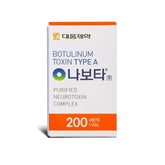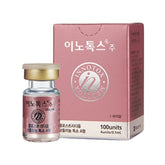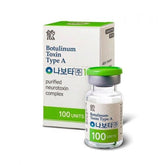Understanding Topical Anesthetics and the Efficacy of Numbing Creams

Understanding Topical Anesthetics and the Efficacy of Numbing Creams. When facing a procedure that might cause discomfort, the thought alone can be unnerving. Enter topical anesthetics, commonly known as numbing creams, which have become a cornerstone in pain management within various medical and cosmetic fields. This blog post delves into the science behind these creams, illuminating how they work and why they are an essential element in patient care.
Topical Anesthetics and the Efficacy of Numbing Creams: Decoding Topical Anesthetics
Topical anesthetics are medications applied to the skin to provide temporary relief from pain and discomfort during procedures. They work by blocking nerve signals in the area where they are applied, thereby numbing the sensation of pain.
The Active Ingredients
The efficacy of numbing creams largely depends on their active ingredients. The most common include:
- Lidocaine: Rapidly induces numbness, making it a popular choice for a wide range of minor procedures.
- Benzocaine: Often used for dental work and cosmetic procedures due to its quick-acting properties.
- Tetracaine: Known for its longer-lasting effects, it's suitable for procedures that require extended periods of numbness.
- Prilocaine: Combined with lidocaine for a synergistic effect, prilocaine can enhance the numbing action.
Topical Anesthetics and the Efficacy of Numbing Creams: How Topical Anesthetics Work
Blocking Nerve Impulses:
These active ingredients block the sodium channels in the nerve endings. This prevents the nerves from sending pain signals to the brain, thus achieving the desired numbness.
Onset and Duration:
The onset and duration of numbness depend on the specific anesthetic used and its concentration. Some take effect within a few minutes, while others may require up to an hour.
Appropriate Use of Numbing Creams
Skin Integrity:
It's crucial to apply numbing creams to intact skin. Broken or irritated skin can increase the rate of absorption, potentially leading to higher blood levels of the anesthetic.
Area of Application:
The size of the area where the cream is applied should be limited. Larger areas can lead to systemic absorption, which can have side effects.
Duration of Application:
Leaving numbing cream on the skin longer than recommended can also increase the risk of systemic absorption.
Topical Anesthetics and the Efficacy of Numbing Creams: Indications for Use
Topical anesthetics are used in various scenarios, including:
- Dermatological Procedures: Such as laser hair removal, tattoo application and removal, and skin biopsies.
- Cosmetic Procedures: Including injectables like Botox and filler treatments.
- **Minor Surgeries:** To numb the area before incisions or injections.
Safety and Side Effects
While topical anesthetics are generally safe, they can cause side effects if not used correctly. These can range from mild (such as redness or tingling at the application site) to severe (like allergic reactions or systemic toxicity).
Topical Anesthetics and the Efficacy of Numbing Creams: Patient Considerations
Health Conditions:
Patients with certain health conditions, particularly those related to the heart or nervous system, should use topical anesthetics with caution.
Allergies:
Those with allergies to local anesthetics need to disclose this to their healthcare provider to avoid adverse reactions.
Advancements in Topical Anesthetics
The field is continuously evolving, with new formulations that improve the efficacy and safety of topical anesthetics. These include:
- Liposomal Encapsulation: This technology allows for controlled release of the anesthetic, reducing the potential for systemic side effects.
- Combination Products: By combining different anesthetics, products can take advantage of various onset times and durations of action.
Topical Anesthetics and the Efficacy of Numbing Creams: The Role of the Practitioner
Healthcare providers must educate patients on the proper use of numbing creams, including how to apply them and recognize potential side effects.
Application Techniques for Optimal Efficacy
Correct Dosing
Using the precise amount of numbing cream as directed is essential for safety and effectiveness.
Occlusion:
Covering the cream with an occlusive dressing can enhance penetration and increase the numbing effect.
Topical Anesthetics and the Efficacy of Numbing Creams: The Importance of Following Directions
Manufacturer Guidelines:
Always follow the manufacturer's instructions or those provided by your healthcare provider to ensure the best results.
The Future of Pain Management with Topical Anesthetics
Research is ongoing to develop new topical anesthetics that provide better pain relief with minimal risk. The future may bring more targeted medications that can provide localized numbness without affecting surrounding areas.
Understanding topical anesthetics is key to leveraging their benefits. These powerful numbing agents offer relief from pain and discomfort, allowing patients to undergo necessary procedures with minimal anxiety. By adhering to guidelines for use and recognizing the science behind their function, both patients and practitioners can maximize the utility of numbing creams, making treatments more comfortable and accessible for everyone involved.





